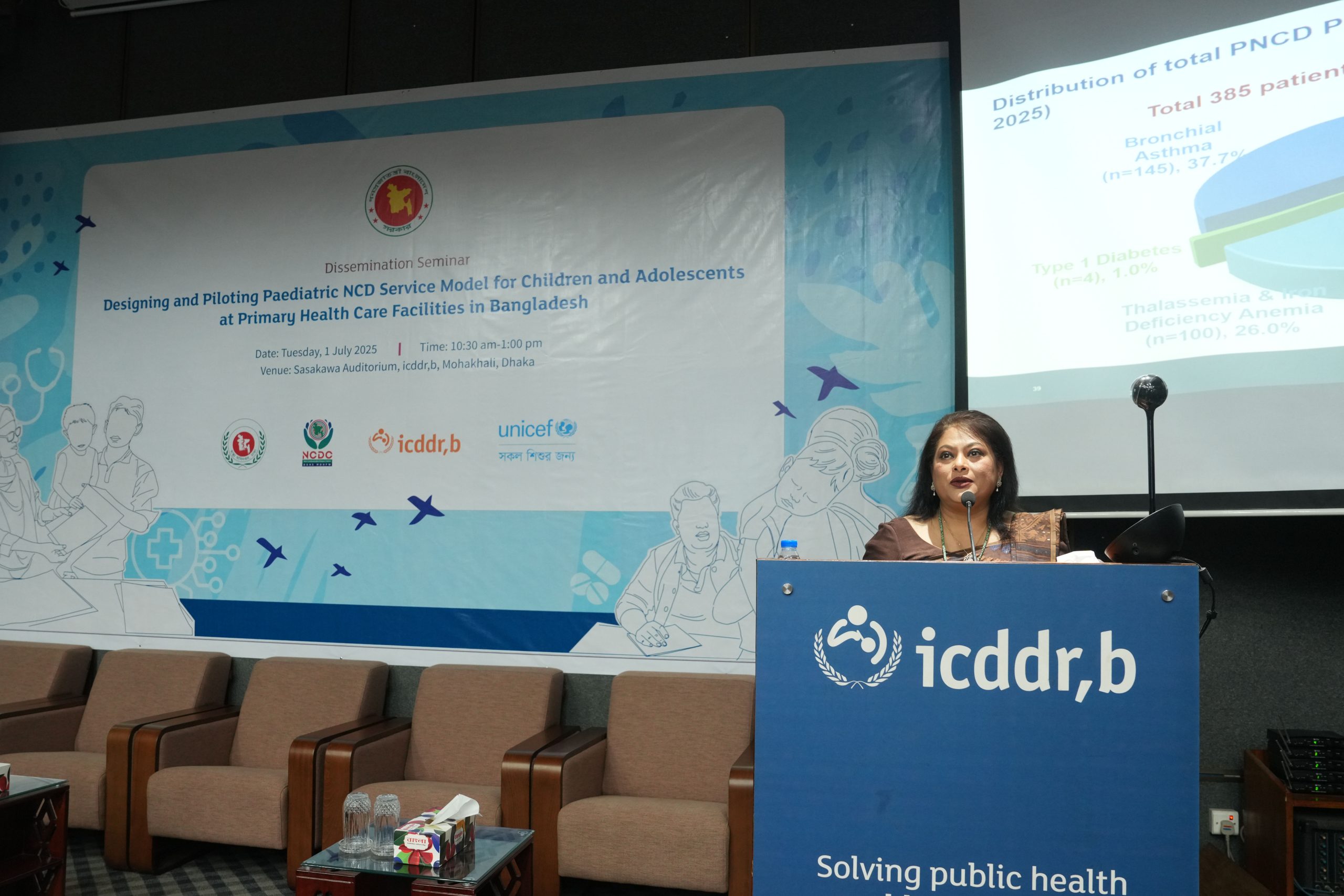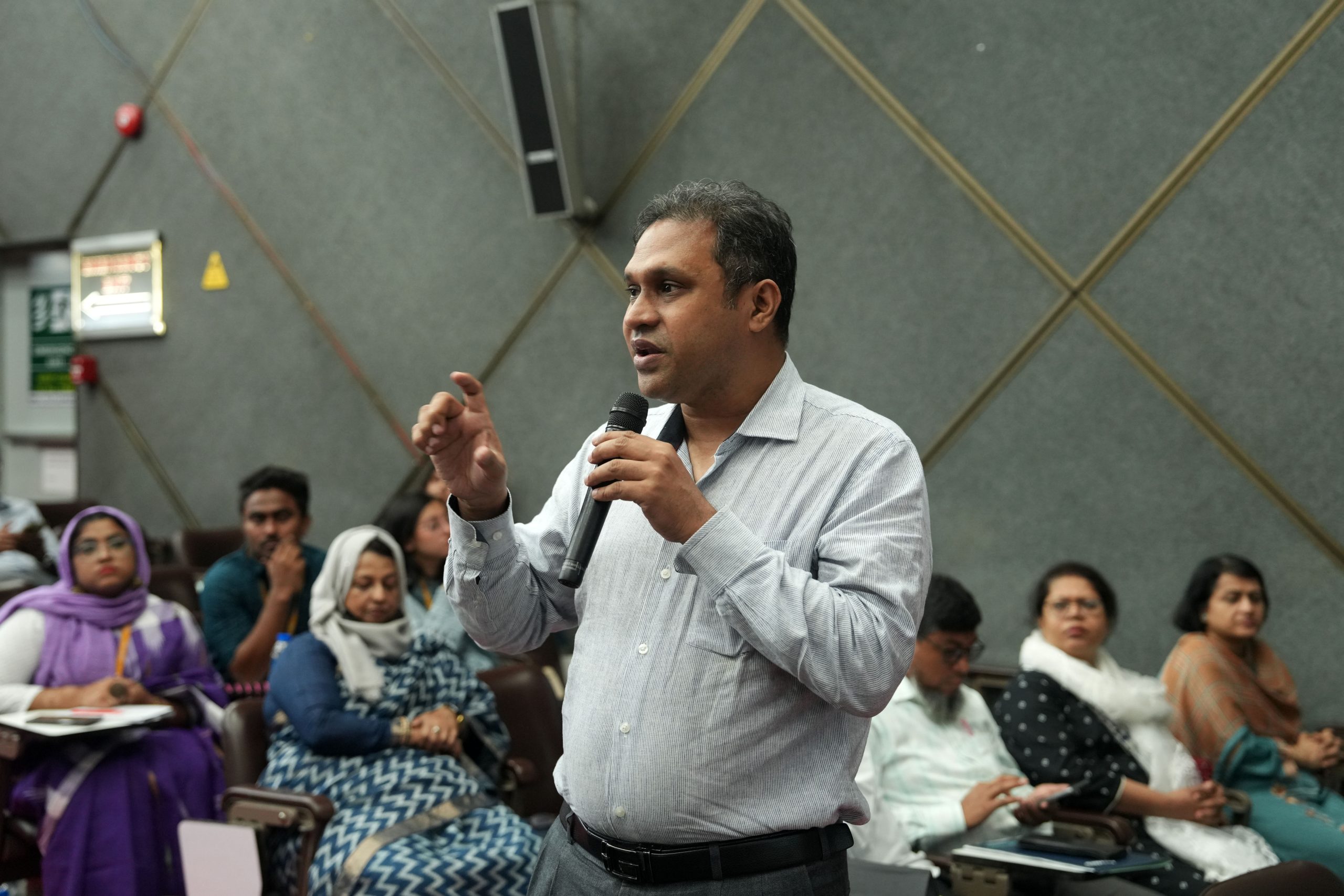Bangladesh Pilots New Model for Childhood NCD Care

First National Pilot for Paediatric NCD Care
Dhaka, 1 July 2025 – Bangladesh has taken an important step in tackling the rising burden of non-communicable diseases (NCDs) among children by piloting the country’s first evidence-based service delivery model for paediatric NCD care at the primary healthcare level. Led by icddr,b, in partnership with the Directorate General of Health Services (DGHS) Non-Communicable Disease Control (NCDC) unit and supported by UNICEF Bangladesh, this initiative aims to integrate paediatric NCD services into the national health system.
Goals and Context of the Study
The project, titled “Designing and Piloting Pediatric NCD Service Model for Children and Adolescents at Primary Health Care Facilities in Bangladesh,” presented its findings today at icddr,b’s Sasakawa Auditorium in Mohakhali, Dhaka.
The study’s main goal was to identify Bangladesh-specific priority NCDs in children and to create a comprehensive model for managing these diseases at the primary healthcare level.
Global Burden and Local Data Gaps
According to the Global Burden Report 2019, over 2.1 billion children were affected by NCDs in 2017, with nearly one million deaths. Bangladesh, however, lacks reliable data on childhood NCDs, revealing critical gaps in research, treatment, and policy.
While WHO’s Pen-Plus initiative focuses on conditions common in Sub-Saharan Africa (like rheumatic heart disease and sickle cell disease), these are less prevalent in South Asia, including Bangladesh.
Six Priority Diseases Identified for Bangladesh
To address local needs, the study identified six key childhood NCDs in Bangladesh:
- Bronchial Asthma
- Congenital Heart Disease
- Epilepsy
- Thalassemia
- Kidney Disease
- Type 1 Diabetes

Based on this research, Bangladesh developed its first National Treatment Protocol for paediatric NCDs in 2024, offering standardized guidelines for managing these conditions.
Pilot Implementation Across Districts
The service delivery model was launched on 10 February 2025 in 12 Upazila Health Complexes in Kishoreganj, eight in Bagerhat, and two district hospitals. It integrated dedicated paediatric NCD services for children aged 0–17 into existing primary healthcare facilities.
Training, Tools, and Technology
The study assessed gaps in primary healthcare facilities for treating childhood NCDs. To address these gaps, the initiative developed:
- Training modules for doctors, nurses, Sub-Assistant Community Medical Officers (SACMOs), and community health workers
- Social and Behaviour Change Communication (SBCC) materials for awareness
- A patient registration system to track records
- A digital platform to generate monthly facility reports
Early Results: Disease Patterns Among Children
In the first seven weeks of the pilot, 385 children were diagnosed and enrolled. The most common conditions were:
- Bronchial Asthma (36.6%)
- Thalassemia and Iron Deficiency Anaemia (27.5%)
- Congenital Heart Disease (19.1%)
- Epilepsy (13.6%)
- Nephrotic Syndrome (2.2%)
- Type 1 Diabetes (1%)
About 8% of these patients were referred to specialized centers for advanced treatment.

Building Capacity Among Health Professionals
To ensure quality care, over 200 healthcare professionals (including doctors, nurses, and SACMOs) and more than 500 Community Health Care Providers (CHCPs) were trained. The Community-Based Health Care (CBHC) and Management Information System (MIS) programs of DGHS also supported the initiative.
Challenges and Future Plans
Despite some operational challenges, the model was found to be both feasible and acceptable to primary healthcare providers. Lessons learned from the pilot will inform a national roadmap to strengthen services in the pilot districts and guide scale-up across Bangladesh.
This work supports Bangladesh’s goals for Universal Health Coverage (UHC) and the Sustainable Development Goals (SDGs), particularly in improving child health and preventing NCDs.
Voices from the Event
Several distinguished guests attended the dissemination seminar:
- Professor Dr. Syed Zakir Hossain, Line Director of NCDC, DGHS, highlighted the importance of NCD prevention and urged scaling up the program by tackling the challenges found in the study.
- Professor Dr. Shah Ali Akbar Ashrafi, former Director of MIS at DGHS, stressed the need to educate mothers at the community level using the developed informational leaflets and to encourage early medical care for children with NCDs.
- Dewan Md. Emdadul Haque, UNICEF Bangladesh’s Health Manager for Maternal, Newborn, Child, and Adolescent Health, expressed optimism about working together to improve NCD services for children.
- Dr. Aliya Naheed, Senior Scientist at icddr,b and Principal Investigator of the study, emphasized that this research lays the foundation for a sustainable, scalable model to address a critical public health challenge.
- Dr. Thaddaeus David May, Senior Director of icddr,b’s Nutrition Research Division, thanked everyone for their engagement and contributions to the initiative’s success.






















